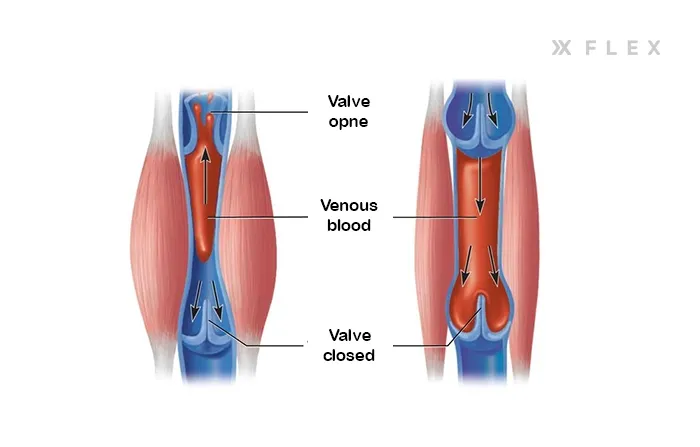How Long Does a Pump Last
This guide will help you maintain big, post-workout muscles for longer. Optimize your diet and nutrition to get a better, longer, pump.
Arnold Schwarzenegger said it best: “The greatest feeling you can get in a gym or the most satisfying feeling you can get in the gym is the pump.”
And it’s a fantastic feeling, indeed! But how do we get there?
In this article, we’ll break down the science of the pump. What mechanisms in your body lead to “transient hypertrophy,” as it’s technically called?
Figure out how long your pump should last on average and what you can do to maintain or improve the pump.
Why Do You Get a Pump?
People often aim for aesthetic workouts to look great and improve their confidence. This includes getting a lat spread or what's known as "the pump." If you’re lucky, you get a pump any time you’re pushing yourself hard in the gym. But why does the pump happen?
Unlike regular hypertrophy, transient hypertrophy only lasts for a short time.
Right after a big leg press or a set of curls, your muscles look bigger in the mirror, right?
If you notice you look a more pumped up look, it’s because your cells are retaining more water.
Yes, it’s disappointing that you may not be getting bigger just yet.
Muscle pumps from increased intracellular hydration. When your cells are hydrated, your muscle fibers swell accordingly to look bigger, creating a pumped-up appearance.
On a happy note, cellular swelling can lead to the mechanisms in your body that increase muscle growth permanently (or at least as long as you maintain your workouts).
Cell swelling can help trigger protein synthesis and inhibit protein breakdown— these basic functions will cause your muscles to increase in size over time.
How Long Does a Pump Last?
Although you may wish you could look as big as possible forever, generally a pump will only last 2-3 hours after a workout.
That said, it depends a lot on your body, your familiarity with the training you’re doing, and several other factors.
There are a few factors outside of your workout that can influence your pump.
Hydration
Did you drink enough water before your workout? Remember, a pump is mostly fluid distribution to the muscles. Remember to drink enough water to fuel your workouts
Carb Loading
Eating enough carbohydrates will. First-rate carbs like whole grain bread, sweet potatoes, quinoa, and millet can all help your muscles hold onto glycogen. Glycogen is a key energy reserve for your body. Keeping your glycogen level at a stable state helps keep the cells of your body and brain healthy and active, so it’s important to mind your diet.
Your supplement routine can make a big impact on how your muscles are fueled too.
For more info on what creatine or other pre-workouts can do for your muscles, see our other articles: Does Pre-Workout Break a Fast, Does Pre-Workout Expire, and Can I Take Creatine Before Bed.
Science of the Pump
When we work out, our bodies need to send more oxygen to the muscles as fuel. To achieve this, more blood flow is distributed to the muscles. This causes a swelling effect that we know as the coveted pump.
The pump is also called “transient hypertrophy.” You know regular hypertrophy, aka muscle growth. Transient hypertrophy mimics this phenomenon, but on a short-term basis, hence “transient.”
Does a Pump Help You Get Stronger?
Over time, there’s no evidence to say that a pump directly increases your overall strength. Although you may look and feel great temporarily, it won’t necessarily make you stronger either.
However, the motions behind the pump, i.e., training at a sufficient volume of reps, rather than a heavier load are certainly associated with hypertrophy and muscle growth.
You want to get as much blood as possible pumping to your muscles, which requires time under tension. Choosing smart exercises that focus on time under tension and volume will help you pump your muscles up and get stronger.
Let’s take a look at some techniques bodybuilders use.
Bodybuilders commonly employ one of two approaches to looking pumped and getting strong:
- High-rep sets with short rest periods. A structure that may work here is 2 sets of 20 reps with 1-minute rets between each set.
- Medium-rep sets with even shorter rest periods. So, say, 6 sets of 12 reps with a 30-second break between each set.
As we’ve mentioned the pump doesn’t directly lead to muscle growth, but it does have some positive correlation with hypertrophy.
For your body to adapt to hypertrophy from resistance training, you need:
- Mechanical tension: The actual actions of a workout you perform
- Metabolic stress: The process that happens when you work out where your muscles accumulate metabolites— lactate, inorganic phosphate and hydrogen ions.
- Muscle damage: Exercise-induced muscle damage that breaks down your muscle tissue, and causes protein turnover and inflammation that help your muscles grow.

Exercises to Get a Better Pump
To increase the length of your pump focus more on volume than weight.
More reps and less weight will give your muscles the chance to expand and contract repeatedly.
When you go a lot of reps, you give your body more opportunity to send blood to the muscles.
Let’s face it, 3 sets of 10-12 reps can get stale if you’re repeating it on every exercise. For newbies, it’s a great structure to get comfortable with lifting and develop good gym habits.
But if you’re a bit more advanced, changing up the way you structure your sets can give you more of an edge on specific physique goals.
Whether it’s the way you look or the actual strength of your muscles.
Not only this, it’s not the most effective if you’re looking.
Let’s take a look at a few alternate set techniques that might help you get a better pump.
Extended Sets
To develop a better workout routine for your pump, try incorporating longer sets with a lot of repetition.
Myo Reps: In this technique, you build on one extended activation set, adding several mini-sets with micro-breaks in between until you fail on a mini-set, lose one rep or go to failure. Myo reps are great if you’re short on time. Plus, they help you crank out a higher-volume workout at a moderate weight. Great for overall muscle building and increasing your pump.
Supersets: Combine a few of your favorite moves for a longer set made up of multiple exercises. You may want to play around with the order of exercises to see what feels most comfortable. Focus on getting a lot of volume here and you should see a better pump.
Tri-Sets: These are just like your supersets. But instead of two moves combined, a tri-set calls for three. Even more volume to push your pump to its max.
Drop Sets: Try out a drop set to increase your pump. Pick a weight that you’re comfortable with for 8-15 reps.
Not only are drop sets great for achieving a pump, but if you’ve plateaued out at a certain weight, drop sets can sometimes help you with weight breakthroughs.
Pump up your body and your workouts. Flex AI offers an all-in-one workout platform to help you learn new exercises, visualize your fitness journey, and keep all your PRs in one place.
We’ve made it simple to work on customized fitness plans or to introduce a little friendly competition to your fitness community by sharing exercises with your friends. Get started for free through the Flex fitness app.
Related articles


Get fit with Flex
Build muscle & lose weight fast for free.
Available on iPhone + Apple Watch





